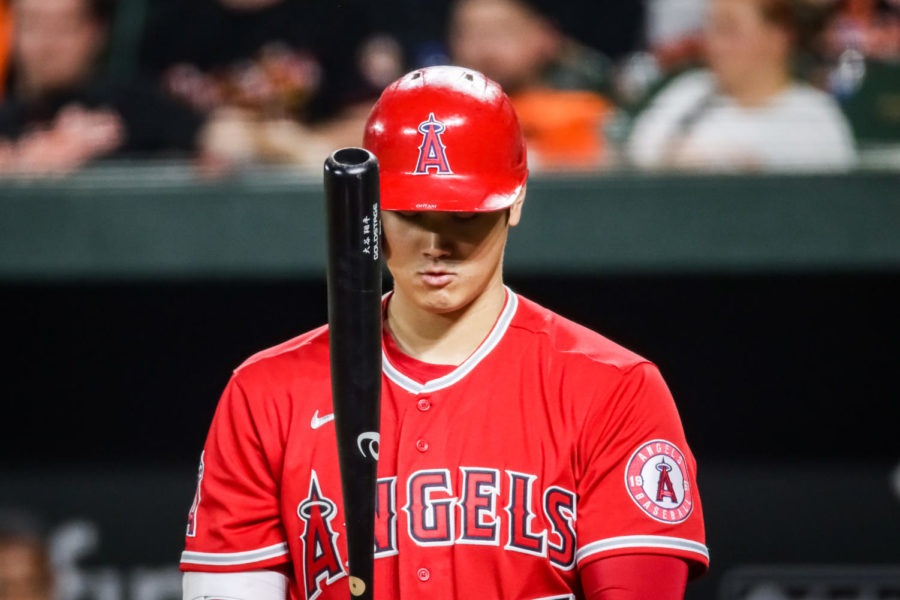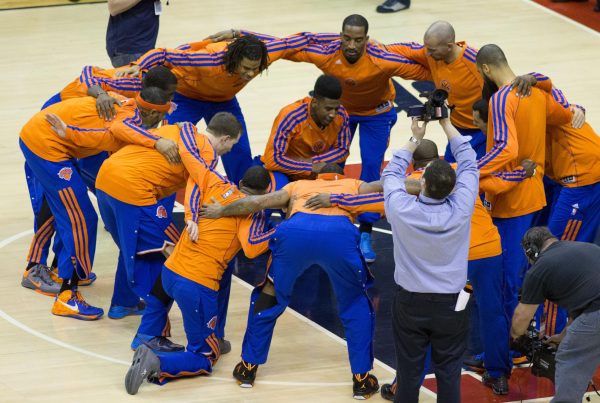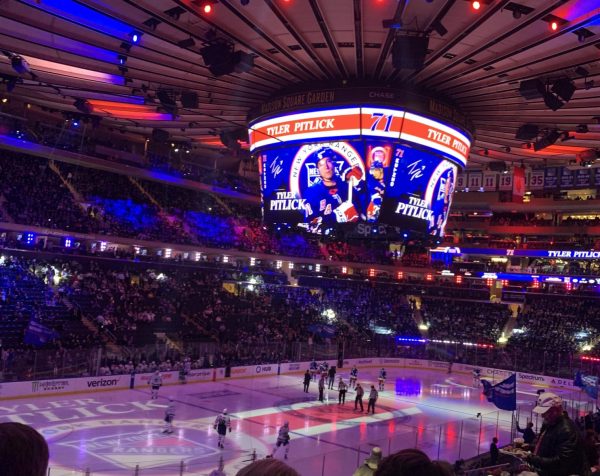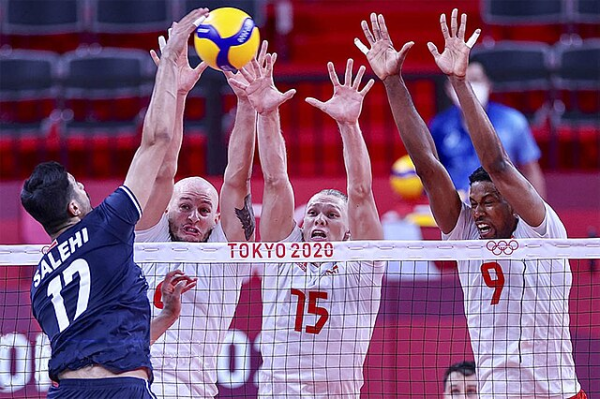Major Changes for Major League Baseball
In a push to create more interesting games, MLB has altered the rules of baseball.
Baseball, once hailed as “America’s pastime,” is running out of time. In the 1800s, when the sport first gained popularity, it had no competition from faster-paced forms of entertainment. But in our modern world, replete with 30-second TikToks and a media environment which focuses on nonstop bombardment of the senses, baseball is struggling to keep up. From 1992 to 2022, the average viewership of Major League Baseball (MLB) decreased dramatically from 22 million to 7.5 million. Even viewership of the World Series, the final and most important series of games in baseball, declined: the 2022 World Series had 11.8 million average viewers, down over 50% from the 2016 one.
In-person attendance has also been decreasing. While attendance rose after the end of social distancing restrictions, fans have still not flocked back into the ballparks. Average attendance in 2022 was down 6% from 2019 (the last pre-pandemic season), and this is in line with a nine-season trend of decreasing attendance.
In a more modern metric of popularity — Instagram followers — MLB is also falling behind. As of June, 2023, the National Basketball Association (NBA) has 82 million followers, the National Football League (NFL) has 28 million, and MLB has just 10 million. Compared to overseas sports, MLB’s following looks even smaller: England’s Premier League currently boasts 67 million followers, and Spain’s La Liga has 46 million. The situation appears even more dire when looking at individual teams. The New York Yankees, MLB’s most followed team, has 3 million followers. Real Madrid, La Liga’s most followed team, has 140 million. While many older fans may look down on online followings as a marker of popularity and success, social media platforms are undoubtedly the preferred mode of interaction for many young fans. But even without looking at social media followings, MLB is clearly not doing as well as other leagues.
Interestingly, and luckily for MLB, these poor numbers have not translated into a sharp decrease in revenue. In fact, revenue actually increased by $100 million to $10.8 billion in 2022, a record amount for MLB. Though this figure reflects simple revenue and not net profit, as it doesn’t account for expenses, it is still an impressive and heartening achievement for MLB. The new revenue largely comes from new deals with TV providers to license MLB streaming rights to a broader audience. Additional money comes from sponsorship deals for everything from beer to sports betting. These sponsorships netted MLB $1.2 billion in 2022, a 5.6% increase from the 2021 season.
But despite the good revenue news, MLB still worries about its future. As other sports, such as soccer, gain popularity in the United States, MLB needs to work harder to stand out and cultivate fans. It aims to capture the attention of contemporary audiences with three rule changes. The first change is the addition of a pitch timer: 30 seconds between batters, and 15-20 seconds between each pitch. The second is a limit on defensive shifts, meaning that teams are required to have at least four players in the infield, two on each side of second base. The third is increasing bases from 15 inches square to 18 inches square.
These changes all target different aspects of the game that MLB has identified as being unappealing to modern audiences. The pitch timer is designed to make baseball games faster, the shift limits aim to create a more aggressive game, and the bigger bases are a measure to reduce dangerous collisions between runners and basemen. As a whole, these changes address a very common complaint about baseball: it is too slow and boring. Most people lack the patience and enthusiasm required to spend three hours sitting in the stands, watching a pitcher stall for time. The sport’s obsession with often baffling numerical statistics also serves to push away would-be fans. In their promotional ads for the 2023 season, MLB addressed this, promising “Three New Rules. More Great Action.”
These changes may seem minor, but they represent a seismic shift for MLB, a league often defined by its focus on the past. Baseball is a nostalgic game, and these forward-thinking reforms have stirred up controversy. The MLB Players Association stated, “Major League Baseball was unwilling to meaningfully address the areas of concern that Players raised, and as a result, Players on the Competition Committee voted unanimously against the implementation of the rules covering defensive shifts and the use of a pitch timer.” Many older fans also despaired, worrying that new rules would take away the magic of their beloved game.
However, with MLB season underway, response to the rules has become largely positive since fans are seeing the faster, more athletic games they were promised. The average length of a game has decreased by about half an hour, and attempts to steal bases have increased to 1.8 attempts per game, the most since 2012. Batting average on balls in play has increased by 6 points, up to .298. By these metrics, the MLB rule changes seem to have succeeded.
However, fan opinions are still mixed. And perhaps even more importantly, many prospective viewers remain unconvinced. The suddenness of the new changes took many by surprise, as MLB introduced the rules without a grace period. “I like that the games are quicker, but I don’t think the umpires were prepared to call the rules fairly,” said Mr. Richard Carli, a Latin teacher at Bronx Science.
Evan Kaskawits ’24 concurred. “I think that MLB had the right intentions but the wrong implementation. They implemented it a little too fast, and people are getting mad about it. I’m a fan of the longer games, but no one has time to watch for three hours,” he said.
Augustina Estime ’24 was similarly pleased with the quicker games. “I think it’s better, because if you’re actually watching, it’s less time so you don’t have to wait in suspense,”she said.
Other fans had less positive feedback, and some were even incensed by the changes. “They have to think faster but they don’t think strategically. Baseball is falling off. I hate baseball now. Bring back the old rules!” said Yana Burmich ’24.
Chase Teichholz ‘24, an avid baseball fan, was similarly displeased. “Getting rid of the shift is a bad idea,” said Teichholz. “It detracts from the things a manager can have in his playbook, and it encourages hitters to keep doing what they’re doing. Players like Anthony Rizzo and Daniel Vogelbach are dead pull hitters ,and there’s nothing preventing them from just always doing that. The shift has a negative impact on good hitters, and is good for pull hitters who don’t adjust.”
“I get upset when MLB tailors the game to a wider audience while taking away from the strategy. The shift is an example of trying to make the game faster, while ruining a loophole that added nuance,” added Teichholz.
Though fans like those quoted have strong opinions on the reforms, many others are staunchly uninterested in baseball, regardless of its rules. When asked for her thoughts on the changes, Nusaiba Afra ’24 expressed an intense dislike for baseball as a whole. “I couldn’t care less about baseball,” she stated. “It’s the most boring sport in the entire world, and no one should care about it.”
Despite some negative feedback, the overall reaction, as indicated by viewership and fan attendance, has been positive. MLB’s Opening Day on March 30th, 2023, drew in 4% more viewers than Opening Day of 2022, and average viewership for the first month of the season was up 11%. In-person game attendance is also up 5% from this time in the previous season. However, this additional attendance is not distributed uniformly throughout the league. Two-thirds of teams have enjoyed increases, while the rest have seen a drop in attendance.
The numbers are promising, but the season still has a long way to go. More recent data suggest that viewership may be backsliding as the current season progresses. This could indicate that while the new rules have sparked a temporary bump in interest, they have failed to garner the long-term, passionate fans the MLB needs. Until end-of-season data are available, the results will remain inconclusive. But even as baseball continues to evolve, striking a balance between tradition and innovation remains paramount in securing its position as a cherished American institution.
“They have to think faster but they don’t think strategically. Baseball is falling off. I hate baseball now. Bring back the old rules!” said Yana Burmich ’24.
Tamar Padwa is a Chief Graphic Designer and Editor-in-Chief for ‘The Observatory’ yearbook. She is also a Staff Reporter for 'The Science Survey.'...











